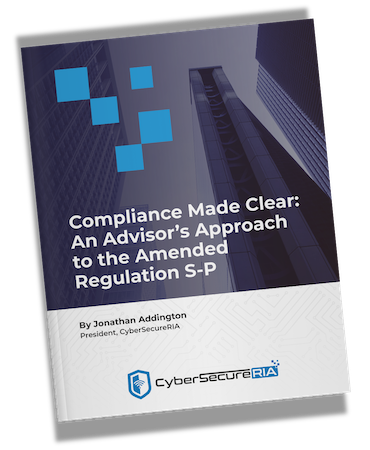In our technology-driven world, cybersecurity is a critical aspect of operational integrity for financial institutions, particularly for Registered Investment Advisors (RIAs). As cyber threats evolve in sophistication, the U.S. Securities and Exchange Commission (SEC) has responded with a newly proposed rule designed to enhance cybersecurity practices within the RIA sector.
Background on the SEC's Cybersecurity Rule
The SEC, as the guardian of fair and efficient markets, holds a mandate to enforce regulatory compliance among Registered Investment Advisors (RIAs) to safeguard investors. Recognizing the growing threat landscape, the SEC has underscored the potential for significant investor harm resulting from cybersecurity incidents. These could range from financial losses due to fraudulent transactions to the erosion of investor confidence stemming from data breaches. The SEC's proposed cybersecurity rule is a direct response to these concerns, informed by real-world incidents that have impacted the financial industry.
Notable cybersecurity events have punctuated the industry's recent history, such as the infiltration of client accounts, unauthorized access to sensitive personal data, and even ransomware attacks that have crippled the operational capabilities of financial firms. These incidents vividly illustrate the risks that cyber threats pose not only to the privacy and assets of investors but also to the systemic integrity of the financial markets. With these examples in mind, the SEC aims to galvanize RIAs into action, compelling them to bolster their cyber defenses and improve resilience against future cyber events.
Through the proposed rule, the SEC seeks to protect investors and the broader financial system from the adverse effects of cybersecurity issues. The initiative is a testament to the SEC's proactive approach in addressing the evolving nature of cyber risks and the critical need for a robust cybersecurity framework in the RIA sector.
Overview of the SEC's Proposed Cybersecurity Rule
The proposed rule by the SEC advocates for a proactive stance on cybersecurity, emphasizing the importance of prevention, detection, and response. It would require RIAs to develop and enforce comprehensive written policies and procedures that are appropriate for their particular operations and risk exposures. These policies should encompass risk assessment, user security and access, information protection, threat and vulnerability management, and incident response and recovery. Furthermore, while RIAs are encouraged to regularly review and update these policies to adapt to changing threats and business conditions, the proposed rule does not mandate a specific annual review timeline.
Implications for Registered Investment Advisors
With the introduction of the proposed rule, RIAs may need to revisit their cybersecurity strategies to ensure compliance with the forthcoming standards. The SEC's proposed rule is designed to be scalable, accounting for the varying resources and complexity of different RIAs. Even though adapting to these requirements may present challenges, especially for smaller advisors, it also represents an opportunity to fortify cybersecurity defenses, enhance trust with clients, and protect essential financial infrastructure.
The Importance of Compliance
For RIAs, adherence to SEC regulations is crucial not only to circumvent penalties but also to sustain investor confidence in the market. The proposed cybersecurity rule highlights the SEC's commitment to protecting the financial ecosystem from cyber threats. RIAs should view compliance as a fundamental aspect of their fiduciary duty to their clients.
Conclusion
The SEC's proposed cybersecurity rule represents a pivotal moment for RIAs to elevate their cybersecurity measures. As the regulation is still under proposal, RIAs have a valuable opportunity to assess their preparedness and plan for the anticipated changes. Staying informed and proactive in developing effective cybersecurity protocols will be key as the industry prepares to navigate these regulatory enhancements.








